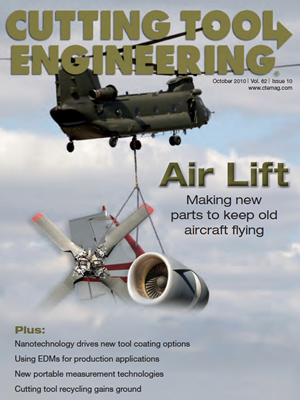If you’re an engineer or designer and work in a place that has metalworking facilities under the same roof, you are a lucky person. It is rewarding and fun to see a design come to life before your eyes, especially if it works.
Of course, there are some challenges inherent with working with shop personnel that they don’t teach in any school.
In my years as a metalworker, I have worked with dozens of engineers and scientists. From the metalworker’s perspective, this experience can be rewarding or pure, bamboo-under-the-fingernails torture. I can count on the fingers of two hands the engineers who earned my admiration and respect. That’s not to say the rest were bad, just that the great ones stand out in comparison.
The hallmarks of these successful professionals were ability, empathy and respect. They understood that respect is something that flows in both directions. If you can earn the respect of shop people, they will truly bleed for you when the chips are down and you need their help.
Engineers and metalworkers seem to come from different sets of molds. Understanding the basic differences goes a long way toward helping the two groups understand one another. For the most part, engineers and designers are created in schools, with their final luster coming from their first character-building jobs. Metalworkers, on the other hand, have learned a smaller part of their knowledge in schools. They learn the bulk on the job.
An engineer’s world is a more open and collegial environment compared with typical shop surroundings. Engineers ask questions in meetings and review each others’ work, looking for errors without placing blame. It’s OK to say, “I don’t understand” or “I’m not following you.”
The metalworker’s world is much different. Many metalworkers have a modest to medium amount of formal schooling. When a metalworker makes a mistake, he takes the brunt of the blame squarely on the nose or, worse, his workmates relentlessly remind him of the specifics of his ignorance. The typical reaction is to hide or minimize all errors. It’s a matter of survival.
A metalworker’s knowledge and special skills are the measure of his self-worth. It is quite normal for shop people to keep secret the specifics of their skills and tricks of the trade. This becomes a gauge of their value and standing in the shop pecking order. Shop people quantify their performance in physical tons of completed work on a pallet and through the bottom line on their paychecks.
It’s kind of like the first tribe to figure out how to make fire. For a while, they were without peer and on top of the heap. Then, some missing-link pre-engineer scratched a diagram in the dirt about how to make fire and the fun was over.
This behavior can be seen throughout history. Engineers and designers write books, take notes and make drawings. Metalworkers pass on their knowledge to the apprentice in the traditional manner—by demonstration and lots of yelling.
So the next time you head out into the shop, take with you this little insight into the kooky mind of the metalworker. Use your powers of observation and see if you agree with me. Now off you go into the cold, smelly shop, and don’t let the door hit you in the butt. CTE
About the Author: Tom Lipton is a career metalworker who has worked at various job shops that produce parts for the consumer product development, laboratory equipment, medical services and custom machinery design industries. He has received six U.S. patents and lives in Alamo, Calif. Lipton’s column is adapted from information in his book “Metalworking Sink or Swim: Tips and Tricks for Machinists, Welders, and Fabricators,” published by Industrial Press Inc., New York. The publisher can be reached by calling (888) 528-7852 or visiting www.industrialpress.com. By indicating the code CTE-2010 when ordering, CTE readers will receive a 20 percent discount off the book’s list price of $44.95.

Related Glossary Terms
- metalworking
metalworking
Any manufacturing process in which metal is processed or machined such that the workpiece is given a new shape. Broadly defined, the term includes processes such as design and layout, heat-treating, material handling and inspection.

